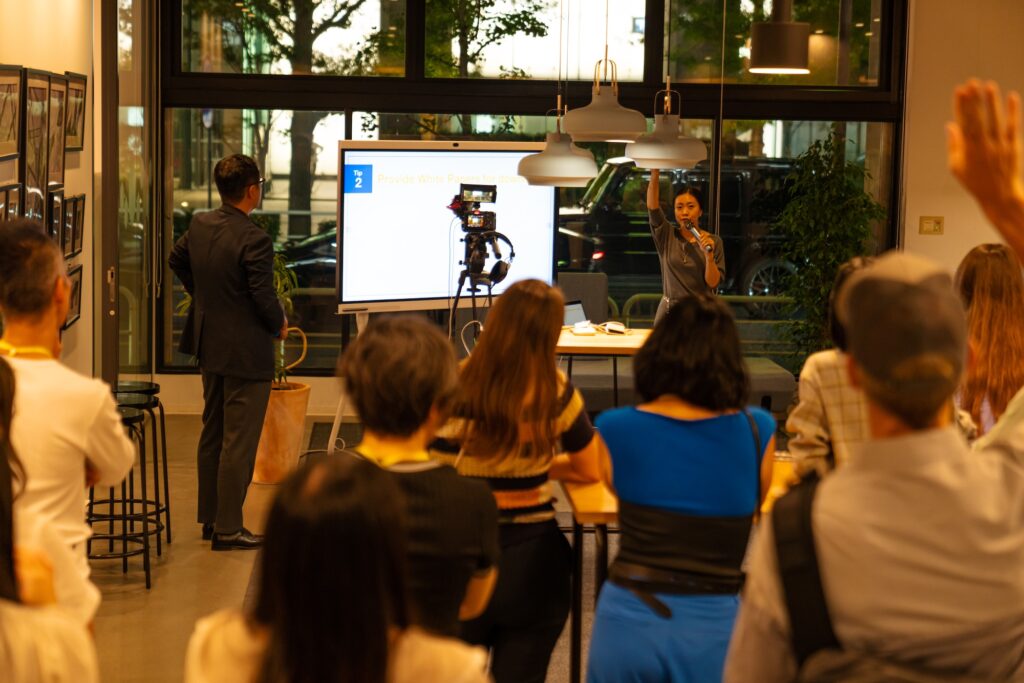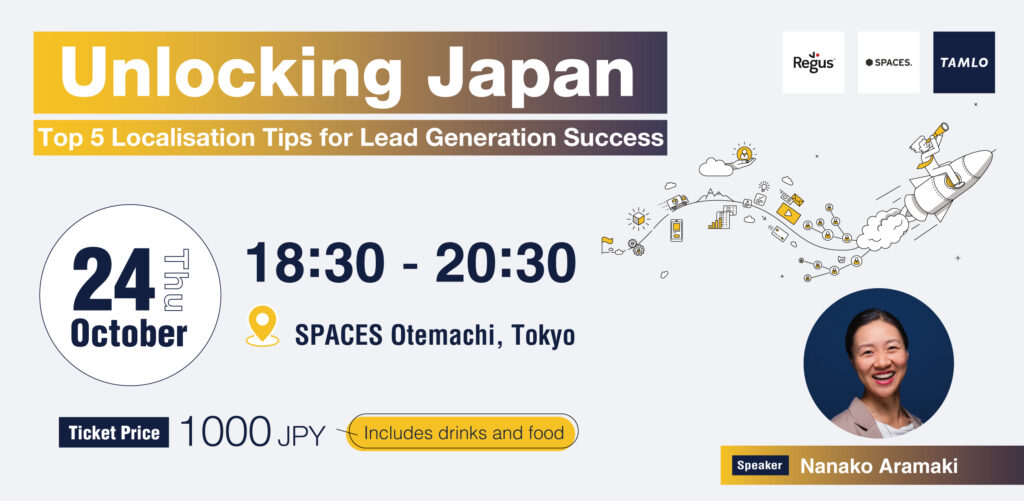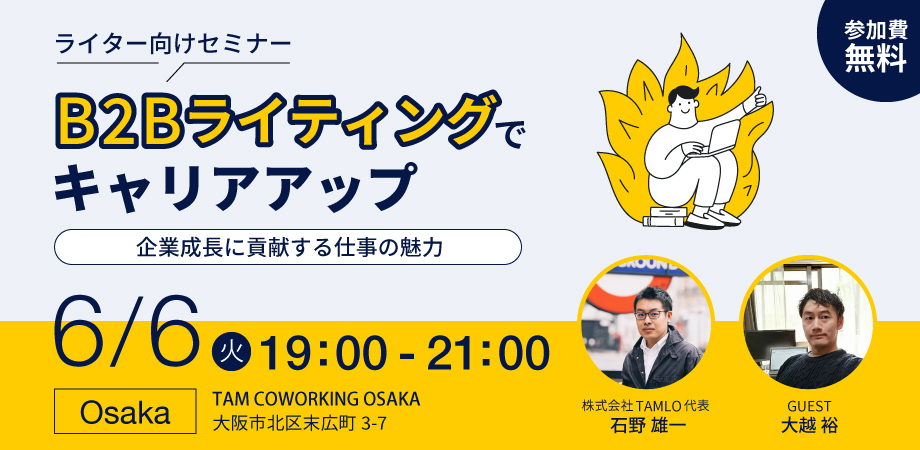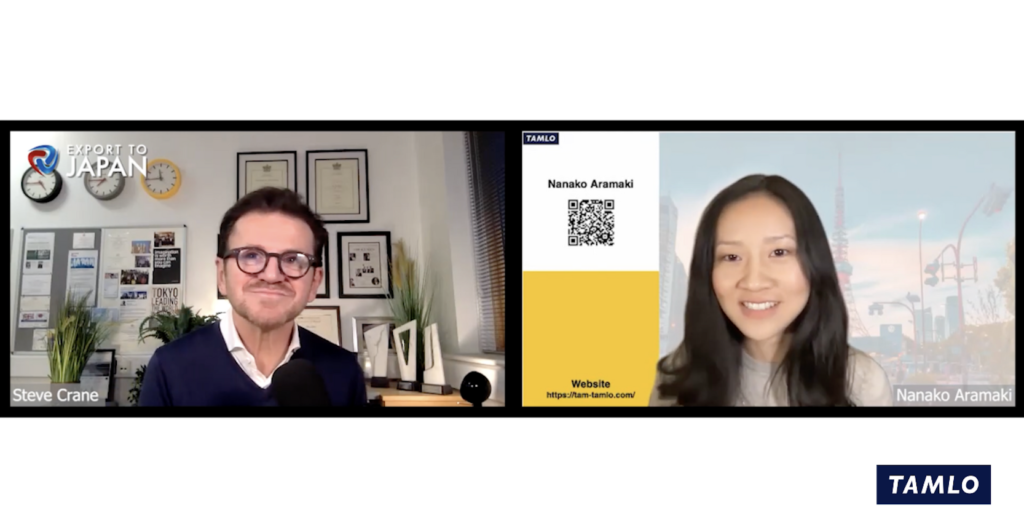Spotlight on Anna: The Poster Girl for Adaptability

A bird of passage
Anna has been bridging the culture gap between the UK, US and Japan long before her time at TAMLO - or any other international marketing agency for that matter.
Born to a Japanese mother and American father, Anna spent the first nine years of her life in Maryland, USA. Her father’s job (with the American Embassy in Tokyo) then took the family to Japan, where they remained for four years. Nine-year-old Anna took it all in her stride.
‘I went to an international school in Tokyo and international school kids love meeting new people! They’re super welcoming and used to saying hello and goodbye because everyone moves quite frequently. So it wasn’t that bad,’ she remembers.
Four years later however, the family returned to the US where Anna enrolled in a local middle school. She recalls this being the most challenging part of her childhood.
‘It was really difficult to make friends. Everyone was going to parties on the weekends but I wasn’t friends with anybody so I didn’t go to any of them! I think it took me about half a year to find a group of friends there.’
However, no sooner had she established her friendship circle in the States than she was whisked back to Tokyo to complete her high school education.
University (or college, to US-born Anna) was once again stateside. Post-uni, Anna was part of the New York’s ad agency scene before returning to Japan to join the Tokyo equivalent. (In 2022, she’s now calling London home.) See her LI page for her full career history.
Phew. Ok. Are you still with us? Good.
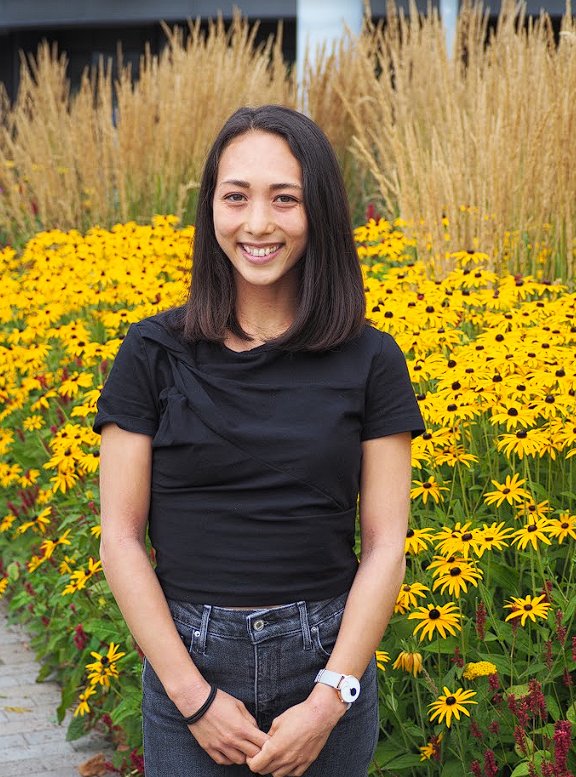
The advantages and challenges of being bilingual
Did she ever feel the same identity crisis that some bicultural, bilingual children reportedly feel? (Anna speaks fluent English and Japanese.)
‘I think it’s quite common when you are mixed whatever - mixed culture, mixed race - you get confused because you feel like you don’t fit in anywhere.’
Modest Anna insists she is not perfectly bilingual and that she still has a native language, which is English. She posits that to be bilingual between two very different language classifications, that don’t share an alphabet, makes it harder to feel fully bilingual.
‘In Japanese I think it’s especially difficult because of the writing system. You might be able to speak and listen well, but when it comes to kanji, you suck! That’s quite common. As a result, people are usually much stronger in one language than the other.’
Anna’s also had to wrestle with the addition of Japanese keigo - the honorific language system reserved predominantly for the business world. Something Western languages don’t have.
‘Obviously I didn’t speak business Japanese with my mum. So when I found myself in a business environment in Japan for the first time, I thought “Oh my God I can’t do this, I don’t know how to say anything!” That was so difficult.’
But Anna recognises the merits of bilingualism, too, believing that ‘breeds empathy’ and fosters an appreciation of different cultures.
‘Once you know how to speak two languages, it gives you a better understanding of the language learning process and makes you more understanding of others who are learning another language. I think I am more open minded and willing to learn because of my background.’
Awkward moments in the workplace
Identifying more as American than Japanese, Anna has had her fair share of awkward encounters in the Japanese working world.
‘The one I always remember is the meishi (Japanese business cards) incident… I took a card with one hand because I didn’t know you were supposed to take it with both hands. Afterwards my manager told me “from now on, I can’t let you be part of the client meetings!” I was like, “oh my god, I am so sorry!”
‘I also learned that when you are in a meeting room you have to stay standing until your counterpart arrives. You can’t sit down. I couldn’t believe it! And in those moments I felt so un-Japanese and so foreign.’
Although now in a less client-facing role at TAMLO, Anna still communicates in Japanese with colleagues in Tokyo.
And what of keigo?
‘Oh, it’s in casual Japanese,’ confirms Anna, ‘I think they know I find it challenging, so they kind of give me a free pass!’
Now, Anna leverages her knowledge of both languages and cultures through her work. Her skill set includes copywriting— for blogs, social media, digital advertising, and SEO—, transcreation (Japanese to English), and copyediting.
Anna on being one of TAMLO’s creatives
‘I enjoy the creative process a lot’, Anna enthuses. ‘[Regarding copywriting] I like trying to absorb the message and write in a way that reflects the brand's personality - jotting down my ideas, stepping away, then coming back to it to tweak. I also like the collaborative side to it, asking my colleagues what they think. It's a lot of fun!’
She explains that TAMLO’s flexibility keeps her creative and engaged.
‘The best part about working at TAMLO is the flexibility, culture, and career growth. We are mostly remote, with the option of a co-working space - and we can do workcations, which allows us to explore another culture, something I think is really important to foster creativity!’
TAMLO’s flat organisational structure has also helped Anna feel confident in the creative process. She explains: ‘There’s no sense of hesitation when it comes to sharing ideas or starting discussions with someone more experienced or senior.
‘The culture is very open and honest, and we can actively share our thoughts, concerns, and ideas. Nothing is off-limits, which makes for a very friendly and compassionate environment.’
About TAMLO, the Japanese content marketing agency
TAMLO is a Japanese content marketing consultancy based in Tokyo and London. It helps international companies localise for the Japanese market and vice versa. Please get in touch if you’d like to work with them or learn more about their team.


